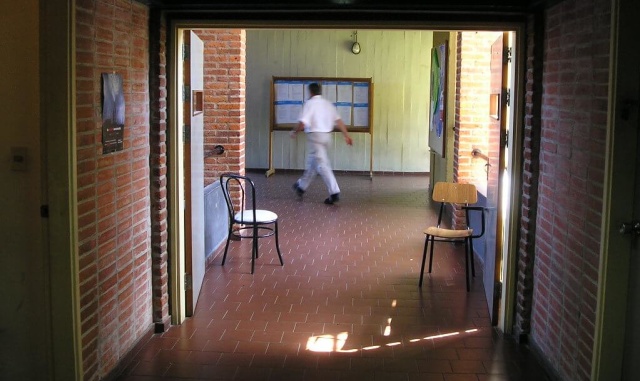
My first introduction to test prep was as a rookie teacher in 1992. Five educators with advanced degrees grew frustrated when analyzing a test question about what Alexander the Great founded on the Nile River. Did he build a library, a university or a museum? How in the world could we turn such distinctions into a meaningful learning experience?
From 1993 to 1994, my students’ test scores increased more than those of any other teacher in our history department. The biggest reason was that a student we can call “T” had scored a 1 percentile on the previous year’s test under a different teacher, but under me he had scored in the 99th percentile. Perhaps I was that much of a better teacher, or maybe I just needed to ask T why he improved so much. The previous year, T said, he was drunk when taking the test. This year, he was high on marijuana.
In the late 1990s, despite my misgivings, I tried to commit fully to the new End of Instruction (EOI) tests and turn the graduation exams into a constructive learning opportunity. I sought to teach in a holistic manner, without raising students’ stress levels or giving into teach-to-the-test philosophies.
The only enduring benefit of such an experience is that my files from that year are full of candid notes about the resulting classes. My notes are especially enlightening about the issue of testing and remediation for students without background knowledge.
History as more than multiple-choice
Our wonderful junior-level U.S. history class loved learning, but tempers flared as we approached the test. My students had low levels of basic skills, but they loved mastering college preparatory concepts. Students had not studied the American Revolution since 8th grade, so we reconstructed a series of time lines. Even with frequent repetition, few juniors could remember within a hundred years the dates of the War for Independence. During the last practice test — which also dealt with world geography — students were supposed to figure out how Azerbaijan and the Ukraine gained their independence, but few tried. To deduce the answer to another question, students were required to know the location of the Nile, Amazon, Ganges or Congo rivers.
The students were upset about the tested vocabulary. They had enjoyed success in breaking down unfamiliar words like “broad construction” and “original intent” in the context of studying constitutional reasoning but not the words “depletion” and “reclamation” as a part of a test-prep regime. They knew “colonialism” and “totalitarianism” but resented the learning of disconnected words like “isthmus” as a part of basic skills instruction. My students would have gladly mastered those terms, as they had so many comparable words, had they been components of the history themes that they loved to study.
Some kids angrily blew up over a question about the capital of Arkansas. In fact, geography facts were what prompted my top student to lose her temper. She, unlike many of the others, understood why I was pushing them past their comfort levels. The test was our job, and if the students were going to make it to college, sometimes they would have to perform unpleasant tasks. I had done everything I could to make the process less threatening, but the kids still felt humiliated. Testing was seen as “rubbing their nose in it,” broadcasting their lack of knowledge to the world.
Truancy as a testing problem
I also had another introduction to a soon-to-be recurring testing ritual. Our school had been improving, but it lacked the capacity for dealing with students who came to school but did not attend class. I always followed procedures for contacting parents of truant students. By the spring, however, many students who had been hiding in the far corners of the school had become distant memories. But the school needed to test at least 95 percent of the students, so the April roundup commenced.
On test day, five chronically truant students appeared, effectively killing chances for a good pass rate. I quickly shut down some students who often produced minor disruptions, as I warned the newcomers to control their behavior. Then I concentrated on setting the proper tone for the test. I reminded myself of the great things the students had done for eight months, and how I also became cranky as testing approached. I silently repeated an important mantra: “Feed the teacher, or he will eat the kids. Don’t eat the kids.”
I look back on my notes from that day with frustration and regret:
As I prepared to pass out the standardized test, I felt pride in our preparation. My voice became nurturing and the kids smiled at my joke about the line of teachers who want my job if test scores do not rise. (…) We spoke of pride. We spoke of responsibility to the school and the community. We all agreed we would want our kids to be able to pass this test.
As I approached the emotional climax of my exhortation, I efficiently and coolly directed a student to leave the room. A girl who had not attended my afternoon class since the first day of school, and who was sitting next to a student who was easily distracted, violated one of my cardinal rules. I will not recount her misdeed because mine was much, much worse. I addressed her as, “You, you, — who I don’t know your name.”
A principal appeared with information about the student that forced me to recognize how cruel I had been to the girl. From one perspective, I had acted appropriately. But I knew the full truth. Happenstance had destroyed our chance to raise test scores, so I “ate the kid.”
In the end, our class’s pass rate was 25 percent higher than the other classes. We scored almost as well as the district average, which, for our school, could be seen as a huge victory.
But as far as I was concerned, the only result of the stress and strain of teaching to the test was a bar graph which displayed the EOI results by teacher. My bar extended three-fourths of an inch higher than those of the other teachers.
That sure was something to gloat over, wasn’t it?





















